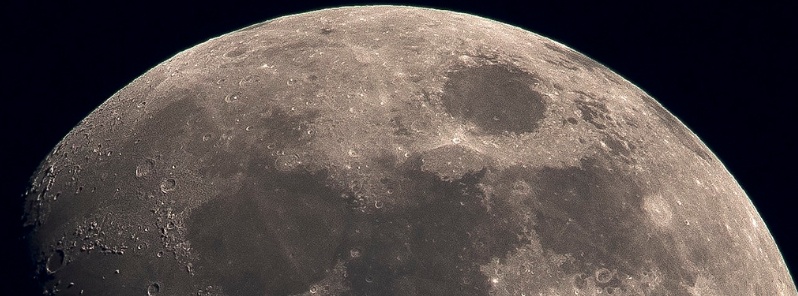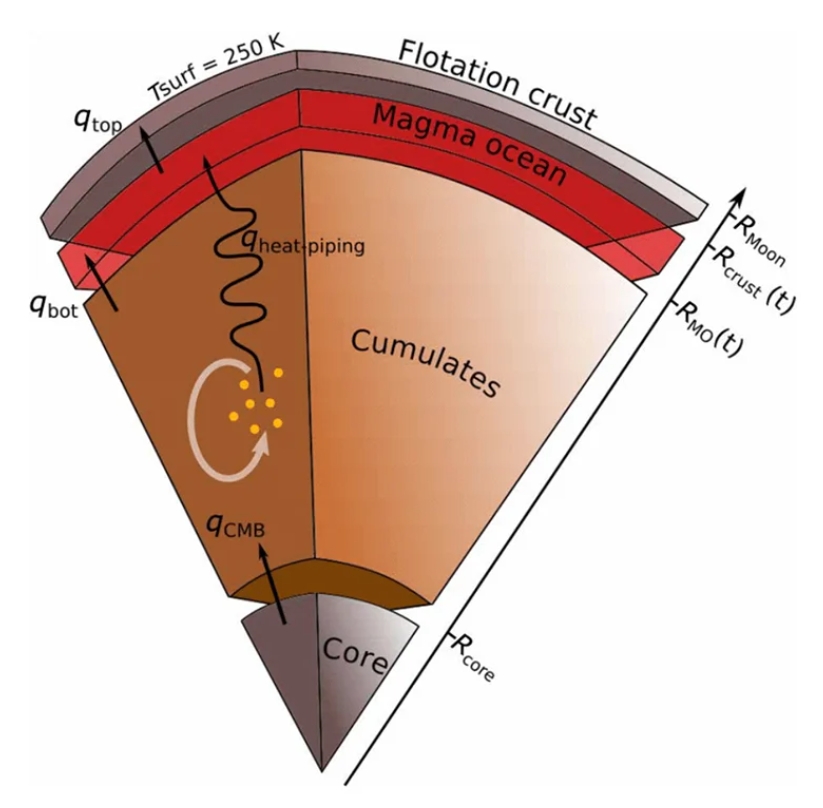Study suggests the Moon is millions of years younger than previously thought

A new study suggests that the Moon is much younger than what was previously thought– about 85 million years younger. Lunar rock samples collected on the Apollo missions are not old enough to confirm the normally accepted 4.51 billion-year for the Moon's age, said researchers, but it can be calculated by looking back to the very first moments of our planet's natural satellite.
According to the commonly accepted hypothesis, the Moon was formed from a collision between the Earth and a smaller planet called Theia, spewing out molten rock that solidified eventually and began orbiting our planet. It means that the rock that makes up the Moon came from the Earth, and can be used to date it using sophisticated modeling.
"The results of our latest modeling suggest that the young Earth was hit by a protoplanet some 140 million years after the birth of the Solar System 4.567 billion years ago," said geophysicist Maxime Maurice from the German Aerospace Center.
"According to our calculations, this happened 4.425 billion years ago– with an uncertainty of 25 million years– and the Moon was born," he added.
Models run by the researchers looked at two timescales: how old the Earth was when it collided with Theia, and how long the Moon's massive magma ocean took to cool after it started to solidify.
The second process took about 200 million years, according to the models. Simulations based on how the Moon's silicate minerals may have evolved led the researchers to the Moon's final age of 4.425 billion years.
The new study underwent major levels of detail, showing how many factors need to be taken into consideration, like how holes punctured in the Moon's surface may have impacted the speed at which it cooled down, and how deep the magma ocean may have been.

Image credit: DLR/Maxime Maurice
"By comparing the measured composition of the Moon's rocks with the predicted composition of the magma ocean from our model, we were able to trace the evolution of the ocean back to its starting point, the time at which the Moon was formed," said geophysicist Sabrina Schwinger from the German Aerospace Center.
This new estimate matches up neatly with the period when it's believed that the Earth's metallic core formed, late in the geological development of our planet. It also fits in the timeline of previous research into damage to asteroids, that may have been caused by the Earth-Theia collision.
"The convergence of these independent estimates not only provides a robust and precise age for the Moon-forming impact but also consistently links this event to the differentiation of Earth and the dynamical evolution of the inner Solar System," the researchers explained.
Reference
"A long-lived magma ocean on a young Moon" – Maurice, M. et al. – Planetary Science – DOI: 10.1126/sciadv.aba8949
Abstract
A giant impact onto Earth led to the formation of the Moon, resulted in a lunar magma ocean (LMO), and initiated the last event of core segregation on Earth. However, the timing and temporal link of these events remain uncertain. Here, we demonstrate that the low thermal conductivity of the lunar crust combined with heat extraction by partial melting of deep cumulates undergoing convection results in an LMO solidification time scale of 150 to 200 million years. Combining this result with a crystallization model of the LMO and with the ages and isotopic compositions of lunar samples indicates that the Moon formed 4.425 ± 0.025 billion years ago. This age is in remarkable agreement with the U-Pb age of Earth, demonstrating that the U-Pb age dates the final segregation of Earth’s core.
Featured image credit: cw

The LMO solidification time scale involves too many perhaps unknown variables during an extremely long planetary time scale. The likelihood of significant unrecorded variables over such a time scale approaches 1. Current time estimates, lunar and orbital, could vary by orders of magnitude compared to future ones.
When you are ready to say something that is true you will finally get it right